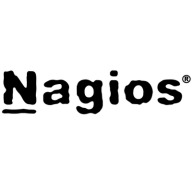

Nagios XI and Azure Monitor compete in the IT monitoring tools category. Azure Monitor has an upper hand in cloud environments due to seamless integration and real-time insights.
Features: Nagios XI is known for its extensive customization through plugins, ideal for tailored monitoring solutions. It can operate on low-spec servers and excels in network service monitoring. Azure Monitor integrates well with Azure's cloud environment, providing real-time cloud resource performance insights and seamless integration with other Azure services.
Room for Improvement: Nagios XI requires additional plugins for enhanced capabilities and faces hurdles due to its configuration complexity and lack of clustering features. The interface could benefit from modernization. Azure Monitor's pricing, tied to data ingestion, can be costly, and its monitoring capabilities outside the Azure ecosystem are limited. Users note challenges in configuration complexity and data costs, with both needing better third-party integrations.
Ease of Deployment and Customer Service: Nagios XI is suitable for on-premises deployments but requires manual configuration, which can be cumbersome. Azure Monitor is favored for its cloud-native design, especially within the Azure ecosystem, with ease of deployment and mixed customer service feedback. Nagios XI offers strong community support but may have delayed responses without commercial packages.
Pricing and ROI: Nagios XI's open-source model is cost-effective, and its commercial version provides flexibility. Azure Monitor follows a pay-as-you-go model, which can be expensive for services with high data ingestion. Nagios XI’s zero-cost core version often delivers good ROI, although its commercial version complexity exists. Azure Monitor's pricing is seen as reasonable by some within its ecosystem, despite high logging costs.
Users end up getting no resolution from their team because they're outsourced vendors, and they don't have deeper expertise over any of the products they are referring to.
However, the second-line support is good.
If the user interface isn’t presenting data well, it becomes difficult to manage when scaling.
Azure Monitor is working fine, yet I face a costing issue as if there are a lot of logs collected in the workspace or in the center, it becomes very costly.
It is very stable.
The cost skyrockets once you start using it, and there are complaints that the actual cost of the Kubernetes cluster was less than the cost they were incurring for Azure Monitor.
If Azure Monitor can independently add one gigabyte, two gigabytes, or five gigabytes at least to log storage, I can fix the logs without syncing with Log Analytics Workspace and Sentinel.
Many tools have poor user interfaces, making them hard to manage and navigate.
The GUI could be improved. It's a bit too basic.
When I export logs into the application, workspace, log analytic workspace, and into Sentinel to read reports, I need to add storage, which increases the cost.
We are using the free, open-source version.
The pricing for the Nagios XI product is good and better than other solutions.
The ease of access in Azure is significant because it's native to the platform and easy to integrate.
Resource monitoring is essential.
Nagios XI simplifies our setup and reduces the time spent configuring monitoring tools.
The alerting system is very effective.


Azure Monitor is a comprehensive monitoring solution offered by Microsoft Azure. It provides a centralized platform for monitoring the performance and health of various Azure resources, applications, and infrastructure.
With Azure Monitor, users can gain insights into the availability, performance, and usage of their applications and infrastructure. The key features of Azure Monitor include metrics, logs, alerts, and dashboards. Metrics allow users to collect and analyze performance data from various Azure resources, such as virtual machines, databases, and storage accounts.
Logs enable users to collect and analyze log data from different sources, including Azure resources, applications, and operating systems. Azure Monitor also provides a robust alerting mechanism that allows users to set up alerts based on specific conditions or thresholds. These alerts can be configured to notify users via email, SMS, or other notification channels. Additionally, Azure Monitor offers customizable dashboards that allow users to visualize and analyze their monitoring data in a personalized and intuitive manner.
Azure Monitor integrates seamlessly with other Azure services, such as Azure Automation and Azure Logic Apps, enabling users to automate actions based on monitoring data. It also supports integration with third-party monitoring tools and services, providing flexibility and extensibility.
Overall, Azure Monitor is a powerful and versatile monitoring solution that helps users gain deep insights into the performance and health of their Azure resources and applications. It offers a wide range of features and integrations, making it a comprehensive solution for monitoring and managing Azure environments.
Nagios XI provides monitoring of all mission-critical infrastructure components, including applications, services, operating systems, network protocols, systems metrics, and network infrastructure. Third-party add-ons provide tools for monitoring virtually all in-house and external applications, services, and systems.
Nagios XI uses a powerful Core 4 monitoring engine that provides users with the highest levels of server monitoring performance. This high degree of performance enables nearly limitless scalability and monitoring powers.
With Nagios XI, stakeholders can check up on their infrastructure status using the role-based web interface. Sophisticated dashboards enable access to monitoring information and third-party data. Administrators can easily set up permissions so users can only access the infrastructure they are authorized to view.
Nagios XI Benefits and Features
Some of the benefits and top features of using Nagios XI include:
Reviews from Real Users
Nagios XI stands out among its competitors for a number of reasons. Several major ones are its integration options and monitoring abilities, as well as its alerting features.
David P., a senior DevOps engineer at EML Payments Ltd, writes, “We use Nagios as a network discovery tool. We use Nagios to maintain our uptime statistics and to monitor our services. It has allowed us to be much more sophisticated in our monitoring and alerting.”
An IT-OSS manager at a comms service provider notes, “Nagios XI has a custom API feature, and we can expose custom APIs for our integration. This is a great feature.”
We monitor all Cloud Monitoring Software reviews to prevent fraudulent reviews and keep review quality high. We do not post reviews by company employees or direct competitors. We validate each review for authenticity via cross-reference with LinkedIn, and personal follow-up with the reviewer when necessary.